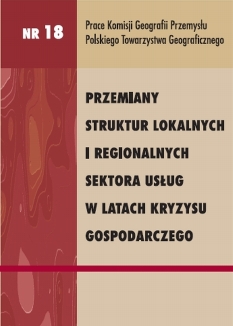Przejawy kryzysu we współczesnym rolnictwie
DOI:
https://doi.org/10.24917/20801653.18.9Słowa kluczowe:
kryzys, rolnictwoAbstrakt
The crisis in agriculture seems to be different than in other economic sectors. This is the result of agriculture’s specificity. There is a very strong relationship between farmers and the results of their work with natural environment. These connections are much more important than in industry or services. Food production is of greatest importance. People have to eat even during very strong economic crisis. Still, there are some types of crises present in contemporary agriculture. Some of them resemble the crises present in the last thousands of years, but some of them are characteristic for current situation. In the article the following types of contemporary agricultural problems were discussed: the crisis caused by natural environment conditions (the case of Russia and India), overproduction (the case of CAP in EU), the economic crisis (the case of West), the crisis caused by political tensions (the case of Laos and Zimbabwe) as well as the situation of Polish agriculture (after Poland’s accession to EU).
Downloads
Bibliografia
EU27 real agricultural income per worker up by 12,3%, Eurostat Newsrelease 201/2010 − 20 December 2010.
Shane M., Liefert W., Morehart M., Peters M., Dillard J., Torgerson D., Edmondson W., 2009, The 2008/2009 World Economic Crisis What It Means for U.S. Agriculture, United States Department of Agriculture.
Socio-economic Atlas of Lao PDR, 2008, Swiss National Centre of Competence in Research (NCCR) North-South and Geographica Bernensia, Bern, Switzerland.
The Common Agricultural Policy Explained, European Communities 2004.
The State of Food Insecurity in the World 2009. Economic crises – impacts and lessons learned, 2009, FAO, Rome.The State of Food Insecurity in the World 2010. Addressing food security in protracted crises, 2010, FAO, Rome.
Uliszak R., 1995, Główne problemy produkcyjne i ekologiczne rolnictwa Unii Europejskiej, Geografia w Szkole, nr 3, s. 131−138.
Pobrania
Opublikowane
Jak cytować
Numer
Dział
Licencja
Artykuły publikowane są zgodnie z warunkami licencji Creative Commons (CC BY-ND 4.0; uznanie autorstwa-bez utworów zależnych).

